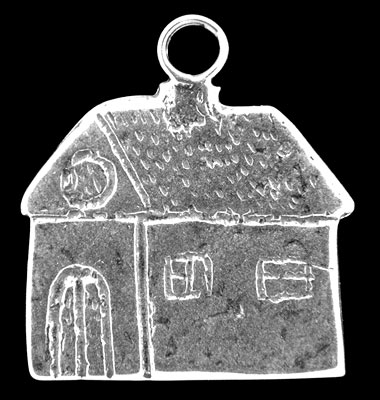Our Gallery

Our store is a friendly place and we do not take ourselves too seriously. We want your shopping experience with us to be enjoyable. Many of the items we offer for sale are unfamiliar to our customers, we are happy to provide information about what we sell. Our staff is knowledgeable and helpful.
Some of the items we carry include:
- Milagros - Learn more about milagros
- Relicarios - Learn more about relicarios
- Santos - Learn more about santos
- Retablos - Learn more about retablos
- Masks
- Traditional jewelry
- Spanish Colonial silver
- Traditional pottery
- Textiles
- Cositas: little stuff
- Latin American Folk Art Books
Our prices are as fair as possible to buyers. We don't bargain. We have a sale shelf, but virtually never do "sales" or markdowns. We are required by law to collect New Mexico's gross receipts tax if you purchase from us locally, even if you wish to have us ship your purchases out of state. Prices are FOB Corrales, NM.
- About Milagros (0)
- In Latin America, the devout often petition a saint for a favor or thank him for answering a prayer by hanging a small representation of the petition on his/her image. These devotional miniatures, generally made of silver or silvery-colored metal today, are called milagros (miracles), or milagritos (little miracles). In some cases, people refer to these tiny effigies--of a person, a house, an animal, crop or vehicle, etc.--as ex-votos, Latin for "from a vow." Oftentimes, a person makes a vow or promise (a promesa or a manda) to the saint to give her a little present when she answers the petitioner's prayer. The quantity of milagros on a saint testifies to the saint's effectiveness in answering prayers.
Customs such as the use of milagros are ancient, timeless, and nearly universal. In the Latin Catholic world, the milagro of a baby asks for a safe pregnancy and birth; the image of a soldier prays for his safe return; a heart may symbolize a love affair or cardiological problem. Basically, the petitioner decides what a milagro represents.
There are no fixed rules about what a specific milagro represents.
Today, many people use milagros to wish a friend well with a serious disease or a concern: a horse miniature for a child hoping for a pony, a car milagro to wish a friend a safe journey or a trouble-free car; a foot milagro for a jogger; a house milagro to wish someone luck in obtaining a mortgage.
- --See Martha Egan, Milagros - Votive Offerings from the Americas (Museum of NM Press, 1991).
- Antiques (16)
- Antiques & Religious Art (0)
- Folk Art (33) updated
- Jewelry (72)
- Other Treasures (42) updated
- Relicarios (12) updated
- Relicarios are devotional lockets, often two-sided, that contain images of the saints, Christ, or the Virgin. The custom of devotional lockets traces back to medieval Europe and the cult of relics. Most typically, the favorite images are painted on tin, silver, wood, mother of pearl, or paper and encased in a silver bezel. While these lockets are often well painted, they are modern reproductions, antique relicarios are very rare. Many reproductions are currently being made in especially Peru and Bolivi.
Genuine antique relicarios are very rare. Many reproductions are currently being made in especially Peru and Bolivia. While often well-painted, these lockets are frequently and falsely described as being antique or Spanish Colonial. Caveat emptor.
- Religious Art (28) updated
- Retablos (19) updated
In the Catholic Americas, the word retablo refers to a variety of devotional items. An altar retablo is the large screen behind an altar that typically contains a principal image such as a crucified Christ together with a number of saints’ images. In Mexico, a tin retablo, also called a retablo santo, is the painted image of a saint on a sheet of tin-coated metal, or earlier, copper or silver. In South America, a retablo can be a small portable altar, typically a box or niche, containing religious or secular scenes with many three-dimensional figures.
- Textiles (28)